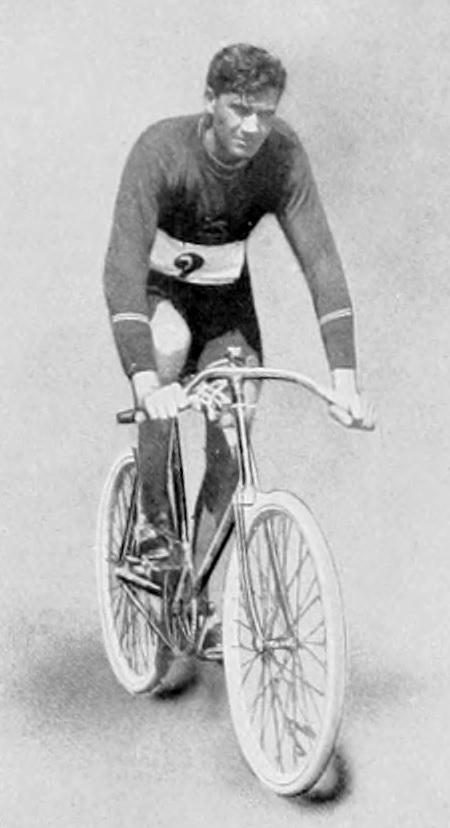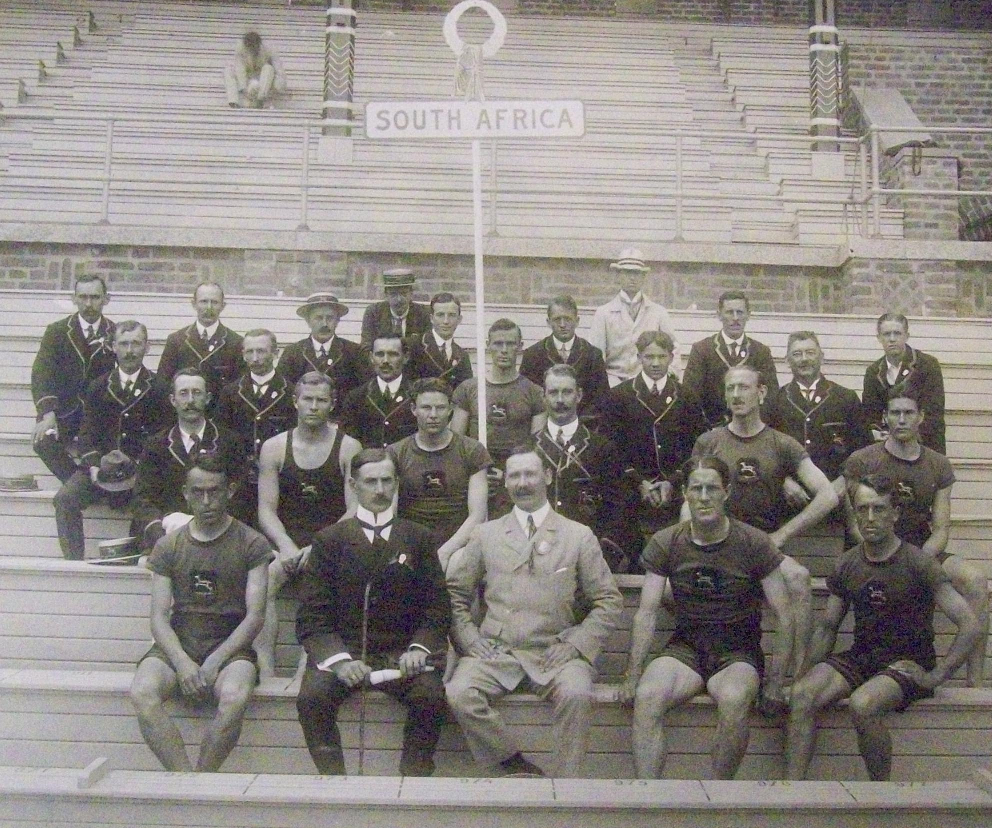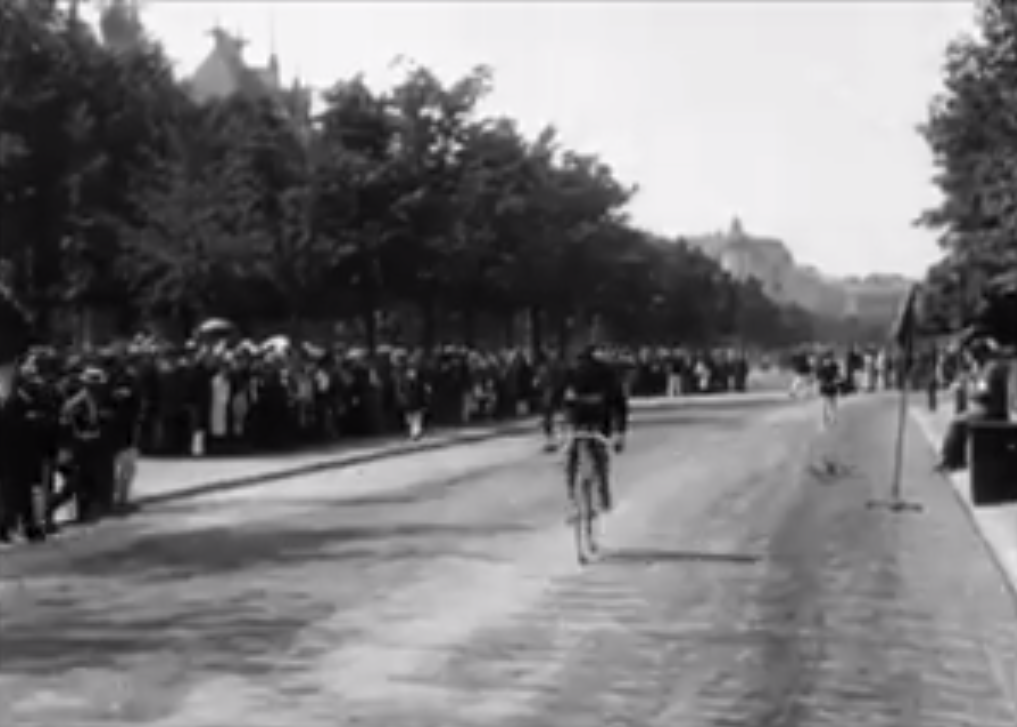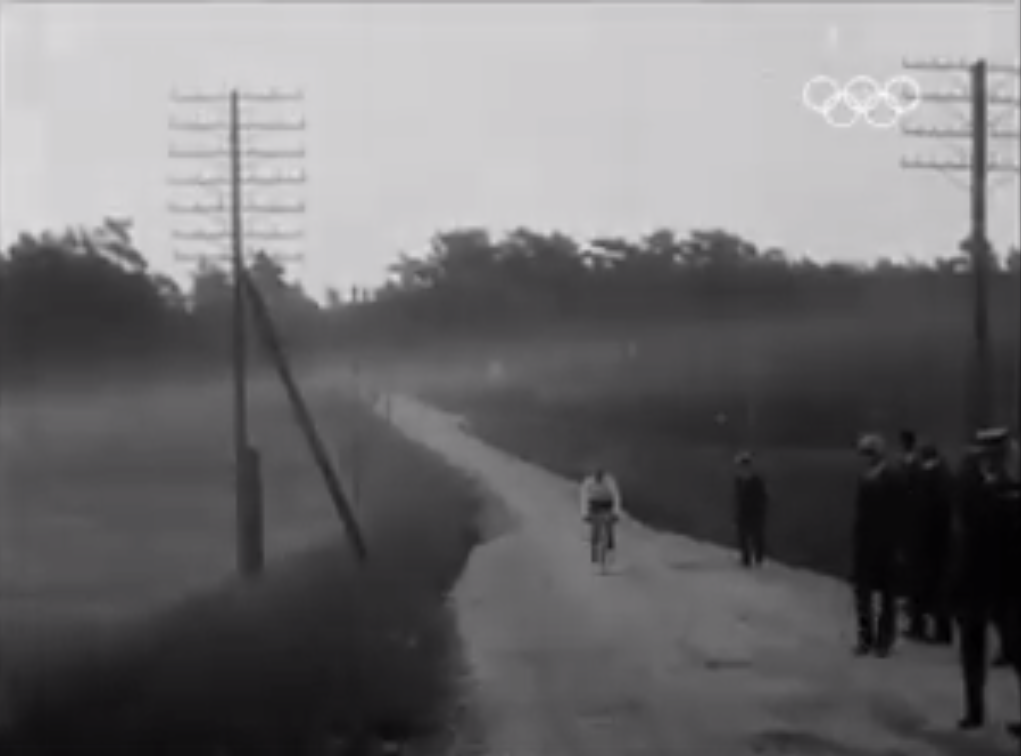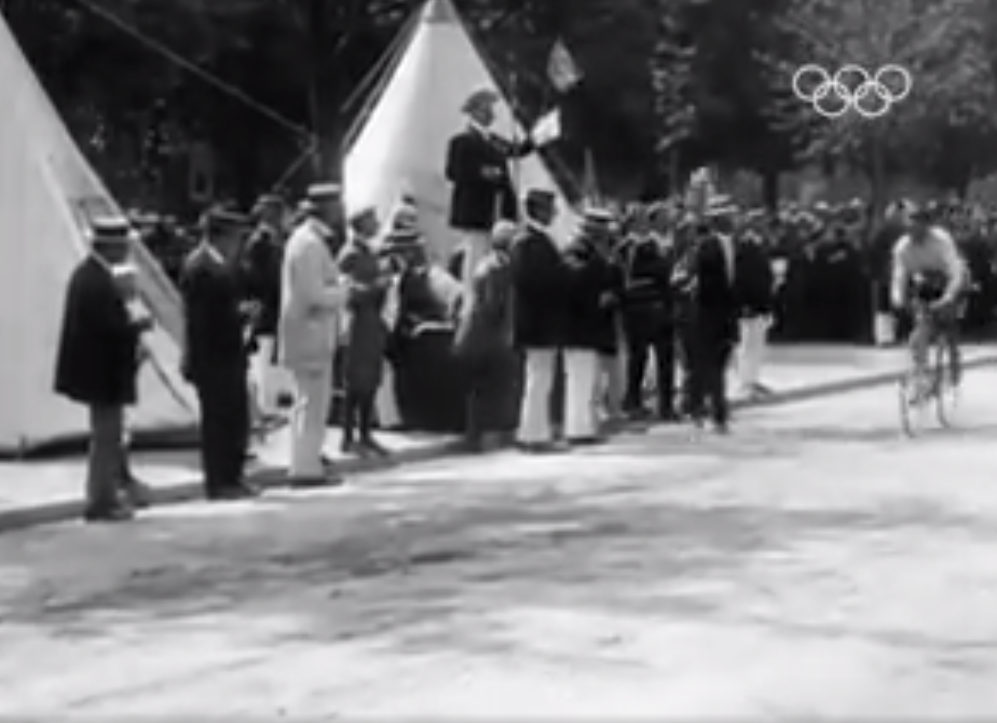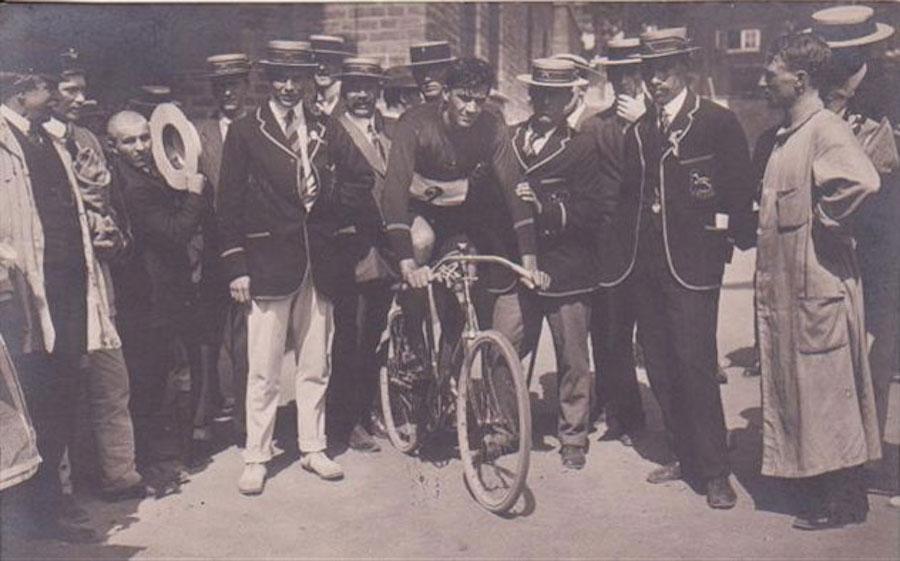
Disclaimer: Any views expressed by individuals and organisations are their own and do not in any way represent the views of The Heritage Portal. If you find any mistakes or historical inaccuracies, please contact the editor.
In the article below, author and history enthusiast Lennie Gouws looks at the story of one of South Africa's forgotten Olympians. The piece first appeared on Lennie Gouws's website where she writes about the rich history of Potchefstroom. Click here for more great stories.
Rudolph Ludewyk "Okey" Lewis (12 July 1887 – 29 October 1933) was a South African road racing cyclist who won the gold medal in the road race at the 1912 Summer Olympic Game in Stockholm in Sweden. This, in itself, is a huge achievement, but if you realise from where this man came to achieve this, it seems almost impossible.
Lewis was born on a farm near Pretoria in the Waterberg district and grew up in Germiston. Prior to the 1912 Olympics, he worked a full-time job for nine years underground in a gold mine and in his spare time trained in cycling, boxing and skating.
Okey Lewis in his Springbok colours at the Olympic Games, sporting his racing number “2” (Wikipedia)
Okey Lewis was South Africa’s only entrant in the cycling race at the Olympic Games. The South African trials for the Olympic Games were held in the Transvaal on 30 March 1912. Lewis was the only one of five riders who was able to finish the course of 150 miles (241.40 km) and he was subsequently chosen for the Olympic team. On 5 April 1912 it was announced that he was included in the team.
The South African team departed from Cape Town on the Armadale Castle on 11 April and arrived on 17 April in Southampton. They arrived in Sweden two weeks prior to the Olympic Games.
The 1912 Olympic Games held in Stockholm in Sweden have been described as “The Great Breakthrough” for a number of reasons. For the first time in the history of the Games representatives from all five continents attended, one of Baron Pierre de Coubertin’s ideals. Coubertin was the man who resurrected the ancient Olympic Games. The first of the modern Olympic Games were held in Greece in 1896.
The Springbok Team at the 1912 Olympic Games was the most successful of all South African teams to compete in any Olympic Games, considering the number of team members to medals ratio. The team consisted of 21 members and they received four gold and two silver medals. This picture was taken in the Olympic Stadium at Stockholm. Okey Lewis sits third from right in the third row. HB Keartland, the athletic coach sits centre front with the light-coloured suit.
The name “Springbok” for the SA Olympic team hails from 1906 when a South African rugby team visited England for the first time and adopted the nickname after a visit to the London zoo, where they came across a small herd of springbok.
In contrast to the huge sponsorships and elaborate kits that today’s athletes receive, the athletes of 1912 had to pay their own way or find their own sponsors. When Kenneth McArthur qualified for the 1908 Olympic Games by winning the qualifying marathon in Cape Town, he was omitted from the South African team mostly due to a lack of funds. In his case, Potchefstroom businessmen rallied to sponsor him for the 1912 Olympic Games. The local newspaper, the Potchefstroom Herald, was wholeheartedly behind McArthur to make it possible for him to compete in Sweden. Click here to read more about Kenneth McArthur).
Only one pair of pants
This was not the case with Okey Lewis. The South African team departed by ship from Cape Town and Lewis arrived for the Springbok’s trip to Europe with only one set of pants, two shirts and a few pairs of socks. HB Keartland, the athletic coach of the team, at his own expense, bought him another set of pants. In spite of his dire circumstances, this young Afrikaans-speaking cyclist had a sunny disposition and with his cheerful smile kept his team mates’ morale high.
The cycling road race was the only Olympic cycling event of 1912. The Olympic Stadium was built on the grounds where the old Stockholm cycling stadium used to stand, but no provision was made for a track for cycling races in the new stadium.
The Olympic authorities in Sweden decided to create the route of 320 km on gravel roads around Lake Mälar a large lake due east of Stockholm. The cycling road race was to be a time trial and any non-competitive cyclists acting as pacemakers were outlawed. Nineteen nations entered 151 athletes into the competition, which was a greater number than expected by the committee. Only 94 of those completed the race.
The largest group was from Great Britain, who had entered twelve competitors from England, another twelve from Scotland, and a further nine from Ireland.
The race began on 7 July, with the athletes leaving in groups. Okey Lewis was regarded as one of the favourites to win the cycling race. Starting positions were decided by casting lots and Lewis drew second position. The first group left at 2 am, with the remaining groups leaving at intervals of two minutes.
A cyclist during the 1912 Olympic cycling event. This is a still from a film made during the race. Note the large crowd.
The bicycle Lewis rode was described as “an 88 gear Swift bicycle”, probably indicating that it had an 88 teeth cog. Keartland, who knew the strength and stamina that Lewis possessed, advised him to regard every control point as a winning post. After starting two minutes after the first rider, he passed the frontrunner after only 8 km. With Keartland’s advice, he opened a large gap between himself and the cyclist in second position and for the rest of the race was on his own in front, oblivious of the positions of other riders.
In contrast to other events, the cycling time trial was a lone race. Lewis had no idea in what position he was until all the riders finished, when he was declared the winner. This photo is a still from a film made during the race.
For the first 160 km Lewis had a head wind. Although his pace slowed in the second part of the race, he was able to stay in front. This was in spite of the fact that his tyre sprung a leak 10 km before the end and he had to stop every 400 m to pump the wheel. Only after all the racers had finished was it confirmed that he was the fastest. Lewis won the gold medal in the individual race in a world record time of 10 hr 42 min 39 sec.
The best of all
Keartland summed up Lewis’s achievement in these words: “As one that has watched South African sport for nearly 70 years and been close to many champions, I rate the best of all of them this man (Lewis) who rode alone.”
Frederick Grubb of Great Britain won the silver medal, and Carl Schutte of the United States won the bronze. However, the average positions of the Swedish team were better than their competitors', and so the Swedish team won the gold medal for the team competition. The silver and bronze medals followed the individual victories, going to Great Britain and the United States respectively – giving Grubb and Schutte a second medal each of the same varieties.
A cyclist crosses the finish line during the 1912 Olympic cycling time trial. This is a still from a film made during the race.
Successful Springboks
South Africa was represented in six of the fourteen sports by twenty two sportsmen. They excelled in receiving five gold medals (cycling, marathon, tennis men’s singles and doubles) and two silver medals (marathon and tennis men’s singles). South Africa received no bronze medals. On the point scale South Africa was eighth out of the 28 countries. To date this was South Africa’s most successful Olympic Games regarding the medals to number of athletes’ ratio.
The caption described this photograph as “prophetic” since it was taken on the ship while the Springbok Team was on their way to Stockholm and shows four of the Springbok’s gold medallists at the Olympic Games. From left to right is: KK McArthur who won the gold medal for the marathon, Rudolph Lewis, who won the gold medal for the 320 kilometre bicycle road race, Charles Lindhurst Winslow and Harold Austin Kitson who respectively won the gold and silver medal for first and second place in the men’s singles in tennis. The two tennis players also won the men’s doubles title.
All the glory but no job
Kenneth McArthur returned to South Africa and Potchefstroom for a tumultuous welcome and resumed his duties as a policeman in Potchefstroom.
In contrast, in spite of his achievements, Lewis lost his employment as a mineworker, due to his participation in the Games, according to the Herald of 6 September 1912. This report appeared at the time of McArthur’s return to Potchefstroom, which Lewis attended. This was despite the fact that he had been “hurried back” to South Africa after the Olympic Games. The report also mentioned that he had a wife and child. Nothing had been done by the Olympic Committee, the report said, “to fix him up”.
At the time athletes using their sporting abilities to earn an income was frowned upon severely and ostracised from the sporting halls of fame. Such an athlete was Lewis, in spite of his achievements.
Out of necessity Lewis returned to Europe in 1913 and raced professionally in Germany in 1913–14. In 1913 he came second in the classic race Rund um Dresden and won it in 1914. He also achieved second place for the Großer Sachsenpreis, but further achieved little success.
During World War I, he served in the German Army and was awarded the Iron Cross. His health deteriorated as a result of war injuries and time spent in a prison camp, which resulted in his early death at age 46 in Pretoria.
Main image: Rudolph “Okey” Lewis, winner of the 320 km cycling road race in record time, is surrounded by other Springboks and supporters at the 1912 Olympic Games.
About the author: Somewhere in her late teens Lennie realised that writing came easy to her and now, many decades later, she has written and co-written nine books on various aspects of the history of Potchefstroom. This is apart from various supplements and numerous articles, mostly published in the Potchefstroom Herald. Three of her books are available on amazon.com. One is a biography on Kenneth McArthur, Olympic gold medallist in the marathon of 1912. The other two are Afrikaans Christian novels. The supplement on the history of the Herald, at the time of its centenary in 2008, led to a Master’s degree in Communication Studies and one of the books, on NWU PUK Arts, led to a PhD in history. In the process of all this writing she has accumulated a large stash of information and photos on the history of Potchefstroom.
Comments will load below. If for any reason none appear click here for some troubleshooting tips. If you would like to post a comment and need instructions click here.

